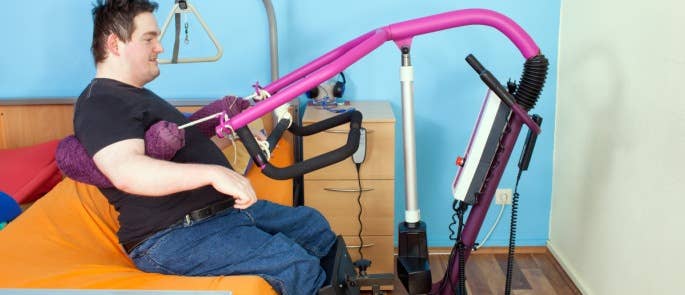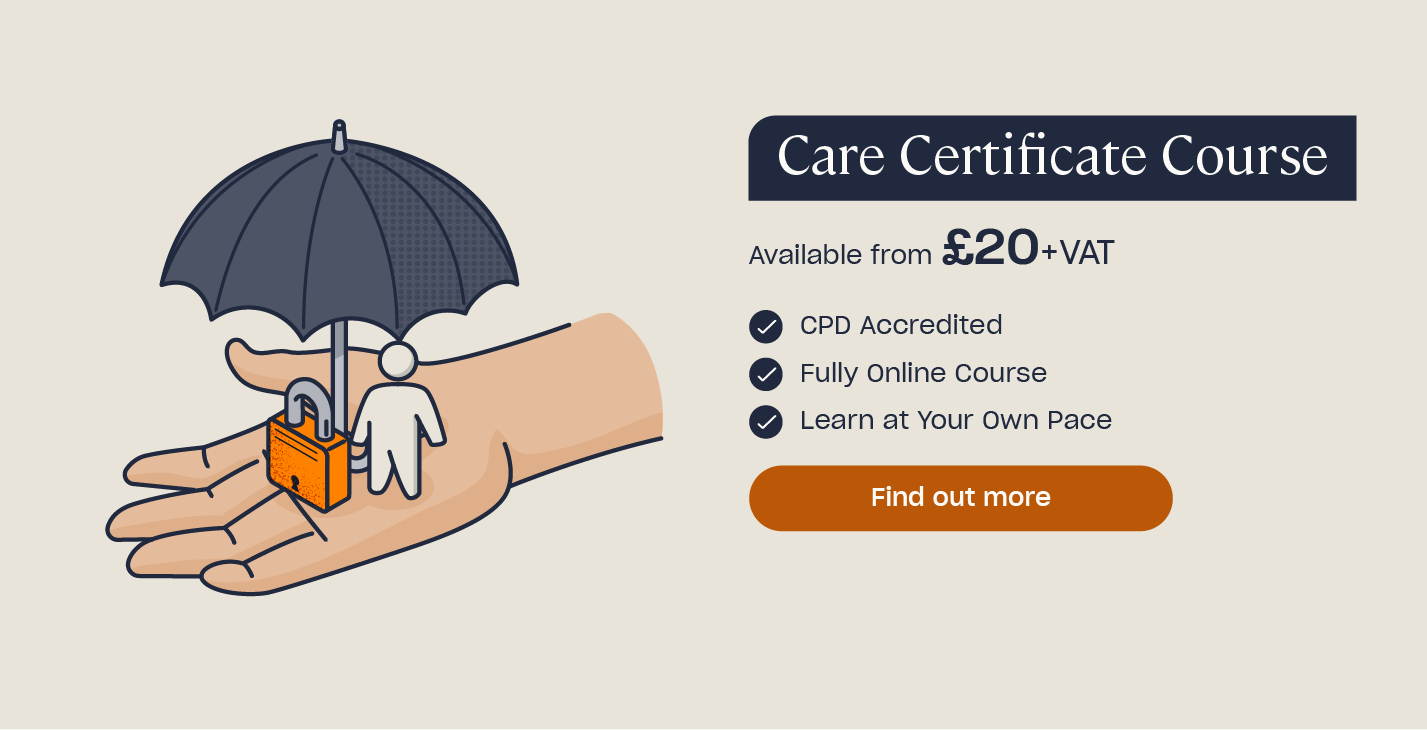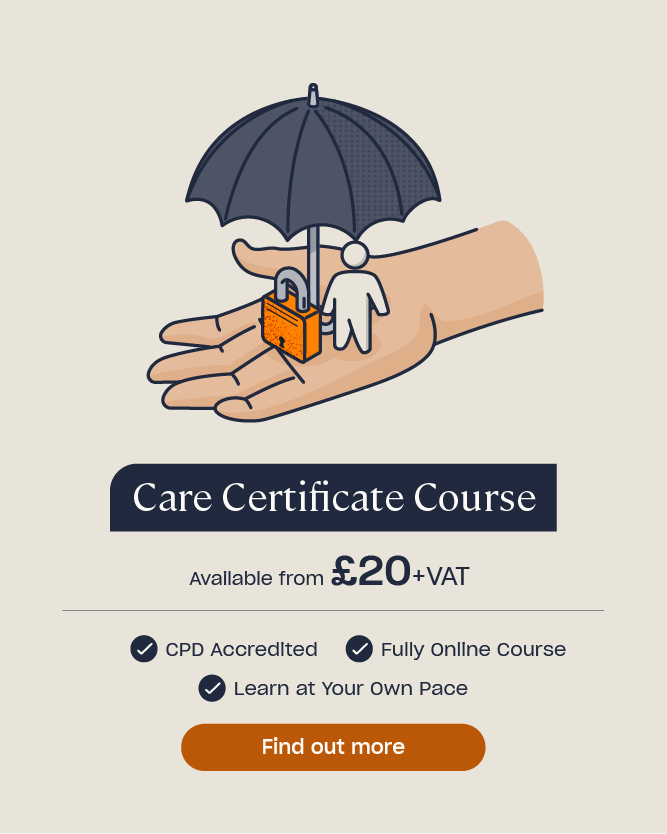Health and Safety in Care Homes: Free Audit Template
Those working in health and social care have the right to work in a safe and healthy environment and service users should be provided with person-centred safe care that respects their rights, freedoms and dignity. It is an integral part of a care worker’s duty of care to work in a safe and competent manner without risking harm to those they care for.
Health and safety is about identifying risks and the ways they are managed, controlled and prevented. Within a care home setting there are many potential health and safety challenges that need to be highlighted and assessed to enable them to be managed effectively.
This article details the most common safety hazards found within care homes, outlines how risks can be managed, explains responsibilities for ensuring service users’ safety and looks at the key legislation to be aware of.

What are the Health and Safety Hazards in Care Homes?
A hazard is defined as a potential source of harm and you only have to picture a busy care home to see its potential for health and safety hazards. They are home to multiple occupants, many of which are vulnerable due to their age, health conditions or mobility, as well as being busy with staff, family and other professional bodies who may be present.
Care home activities often involve the moving and handling of people, equipment and stock along with personal care tasks, medication administration, cleaning, cooking and many more. Everyone within the care home can be at risk of encountering potential hazards. Some of the key areas where hazards are often present are:
- Moving and handling – moving and handling is a huge part of a care worker’s role and therefore puts them at higher risk of injuries. Many service users require some form of assistance in their daily tasks such as dressing and bathing. Others are fully dependent on the care worker for their personal care and transfers using equipment, such as hoists. The Health and Safety Executive (HSE) states over a quarter of ill-health reports in the social care sector were musculoskeletal, which can arise from using incorrect moving and handling techniques.
- Slips, trips and falls – many of those residing in care homes could be vulnerable to falls. Trailing wires from equipment, wet slippery floors and obstructions are the most common hazards with HSE stating they were the biggest cause of non-fatal injuries in 2019/2020.
- Water-based hazards such as Legionnaires’ disease – generally contracted through breathing in water droplets in the air that contain the bacteria, this is a hazard often mentioned in relation to care homes as the elderly are more vulnerable and susceptible to severe illness.
- Hot water and surfaces – service users with reduced mental capacity or those sensitive to heat can be very vulnerable to injury from hot water and hot surfaces. Falling and being unable to move away from a hot surface is also a prominent hazard.
- Fire Safety – not having a safe, regulated environment, trained staff, appropriate equipment and robust safety procedures in place puts everyone at risk of harm in the event of a fire.
- Inadequately trained staff – for all tasks within a care home, from physical ones to methods of communication, if care workers are not working in ways that support the values of the 6 C’s they can cause physical or emotional harm.
- Food handling and preparation – food prepared incorrectly and with poor hygiene practices can result in harm to those that consume it. It can also act as a vehicle of transmission for infectious diseases.
- Hazardous substances, infections and diseases – not following proper procedures for these matters could lead to illness or injury, potentially on a widespread scale.
- Violence and aggression – there can be many factors that increase the risk of violence and aggression, such as cognitive issues like dementia or cultural or language barriers. It may be directed at staff from service users or between service users themselves.
- Bed rails – these are not only work equipment but also medical devices. Accidents and injuries can occur from using them incorrectly and by service users becoming entrapped in them.
- Equipment safety – if equipment used in the care home isn’t regularly maintained as per the manufacturer’s recommendations and legal requirements, then the risk of it not working safely and correctly increases.
- General working environment – the premises and its maintenance should be consistently monitored to ensure services such as gas, electrics and water supply are safe.

Who is Responsible for Safety in Health and Social Care?
Health and social care workers must only perform duties once they are deemed fully trained and competent to do so. They have a responsibility to work in line with the legislation, policies and procedures in place for each task they undertake. They are responsible for taking reasonable care of themselves and all those within the workplace.
There are many legal responsibilities for the employer. Management must ensure that there are robust systems in place to assess whether these responsibilities are being met and record and review them. They must support the protection of their employees’ and service users’ health and safety and their general wellbeing. They are responsible for providing a safe working environment, appropriate training and safe working equipment.
Health and safety in the workplace must be everyone’s responsibility. Everyone must act in a way to avoid causing harm to any person or property and it is everyone’s duty to report potential hazards when they see them. Health and safety legislation exists within a care home to protect people at work, those who are affected by working activities and those receiving care and support.
Looking to Learn More?
If you want to learn more about key areas of health and safety in a care setting, why not check out our Fire Safety for Care Homes or Moving and Handling of People in Residential Care courses? Furthering your knowledge is a great way to improve your professional development and helps you provide safer, higher quality care.
Health and Safety Legislation in Care
Acts, regulations and orders set out the requirements that each care home’s policies and procedures must meet. Some of the key pieces of legislation for health and safety in care are:
- Health and Safety at Work etc. Act 1974 – this aims to protect people from risk or injury and places a responsibility on employers and employees to work in a safe way.
- Reporting of Injuries, Diseases and Dangerous Occurrences Regulations 2013 (RIDDOR) – this stipulates that employers and those in charge of premises must report and record work-related accidents that cause certain serious injuries or death.
- The Management of Health and Safety at Work Regulations 1999 – this requires employers to carry out risk assessments, provide training and ensure staff are competent.
- The Regulatory Reform (Fire Safety) Order 2005 – this requires every workplace to reduce the risk of fire and ensure people can safely escape if a fire occurs.
- Control of Substances Hazardous to Health Regulations (COSHH) 2002 – this aims to protect people from hazardous substances through risk assessment, controlled exposure, health surveillance and incident planning.
- Electricity at Work Regulations 1989 – this places responsibilities on employers, as much as is ‘reasonably practicable’, to protect people from danger and improperly used electrical systems and equipment. Electrics must be maintained and serviced appropriately.
- The Manual Handling Operations Regulations 1992 – this explains how to avoid, assess and reduce risk of injury caused by moving and handling any load.
- The Provision and Use of Work Equipment Regulations (PUWER) 2002 – under these regulations, equipment must be safe, suitable, well-maintained and inspected.
- The Lifting Operations and Lifting Equipment Regulations (LOLER) 1998 – this outlines that all lifting involving equipment must be planned by a trained and competent person, supervised and carried out safely.

How Can Care Workers Manage Health and Safety Risks?
We have discussed the responsibility of management and care workers in relation to health and safety. It is important to remember that managing the associated risks needs the cooperation of everyone at all levels. There are always practical steps to take during day-to-day duties, such as:
- Report any health and safety concerns in a timely manner.
- Move any obstacles that present a risk.
- Be mindful of trailing wires when using equipment.
- Check the water temperature is suitable before exposing a service user to it.
- Maintain good hygiene practices.
- Encourage the use of recommended walking aids to prevent falls.
- Use bed rails correctly.
- Read care plans and risk assessments for each service user and for duties performed around the home.
One of the most important ways a care worker can minimise any risks to themselves or service users is to work in line with current legislation and the organisation’s policies and procedures. They should also only perform tasks when they are fully trained and competent.
Risk assessments in care homes play an important role in maintaining health and safety standards and are required to identify the vast range of hazards that can be present. When creating policies and procedures that mitigate and manage these risks, it is worth considering what needs to be achieved to meet the expected standards of the regulator during a health and safety audit.

Along with all other relevant legislation and HSE guidance, the Care Quality Commission (CQC) requires care homes to operate in line with the Health and Social Care Act 2008 (Regulated Activities) Regulations 2014: Regulation 12. This is intended to prevent those receiving care and treatment from any avoidable harm or risk of harm through unsafe care. It states that providers must assess risks to a person’s health and safety during care and treatment and that staff must have the competences, training and skills to keep people safe.
Under this regulation, both premises and equipment must be safe and available in sufficient quantities where needed. Medications must also be supplied in sufficient quantities and safely managed and administered.
The spread of infection must be prevented and controlled and when the responsibility for a service user’s care and treatment is shared, timely planning of care is required to maintain health, safety and welfare.
The care home must demonstrate they have taken all reasonable steps to ensure the health and safety of their service users and to manage any risks that may arise during care and treatment.
The CQC can prosecute for a breach of part or all of the regulation if it results in avoidable harm or exposure to significant risk of harm by a service user. The CQC must refuse registration if it cannot be shown satisfactorily that the provider will continue to comply with this regulation.

Free Health and Safety Audit Template for Care Homes
We have discussed within this article that many hazards present themselves within a care home setting and that these hazards must be managed, controlled and prevented. Here, we provide a health and safety audit template that helps to consolidate all the areas that must be checked and policies that must be in place. This should make it easier to ensure health and safety processes are in place effectively throughout the home.
It is recommended you print out this audit template so it can be completed and accessible for staff to utilise. This is not an exhaustive list so there are additional blank spaces for you to add more information that you may find appropriate within your organisation.
Health and safety in care homes is about identifying risks and how they are managed, controlled and prevented. It is every member of staff’s duty of care to protect themselves and those around them from harm. All care homes must have robust systemic processes in place to protect the health and safety of their workers and service users at all times.
Further Resources:
- Health & Safety Courses
- Fire Safety in Care Homes Checklist
- Duty of Care in Health and Social Care: Responsibilities & Examples
- Care Home Risk Assessment: Free Template
- Activities for Care Homes: Free Planner and Ideas
- Manual Handling in Care Homes: Using Hoists Safely
- Health and Safety Quiz
- What Are the Consequences Of Poor Health & Safety Procedures?








